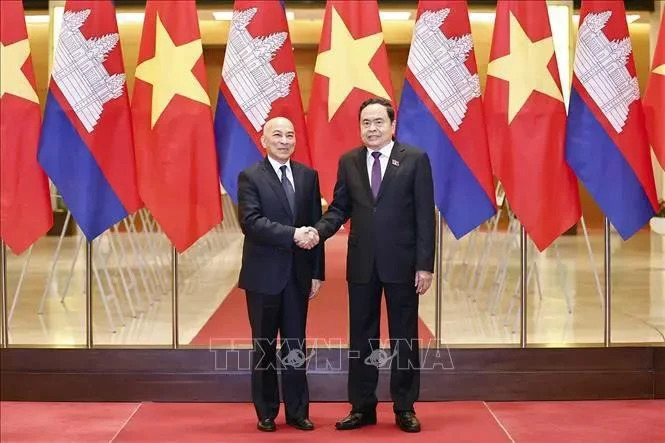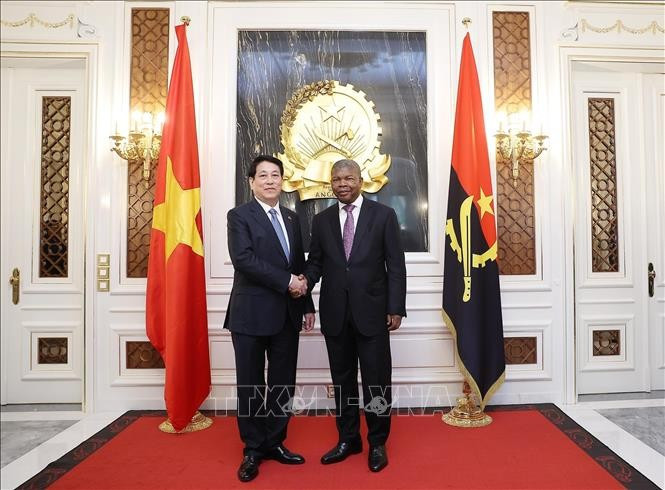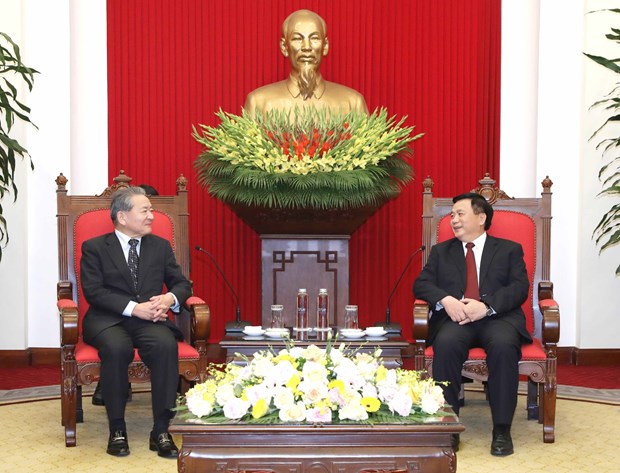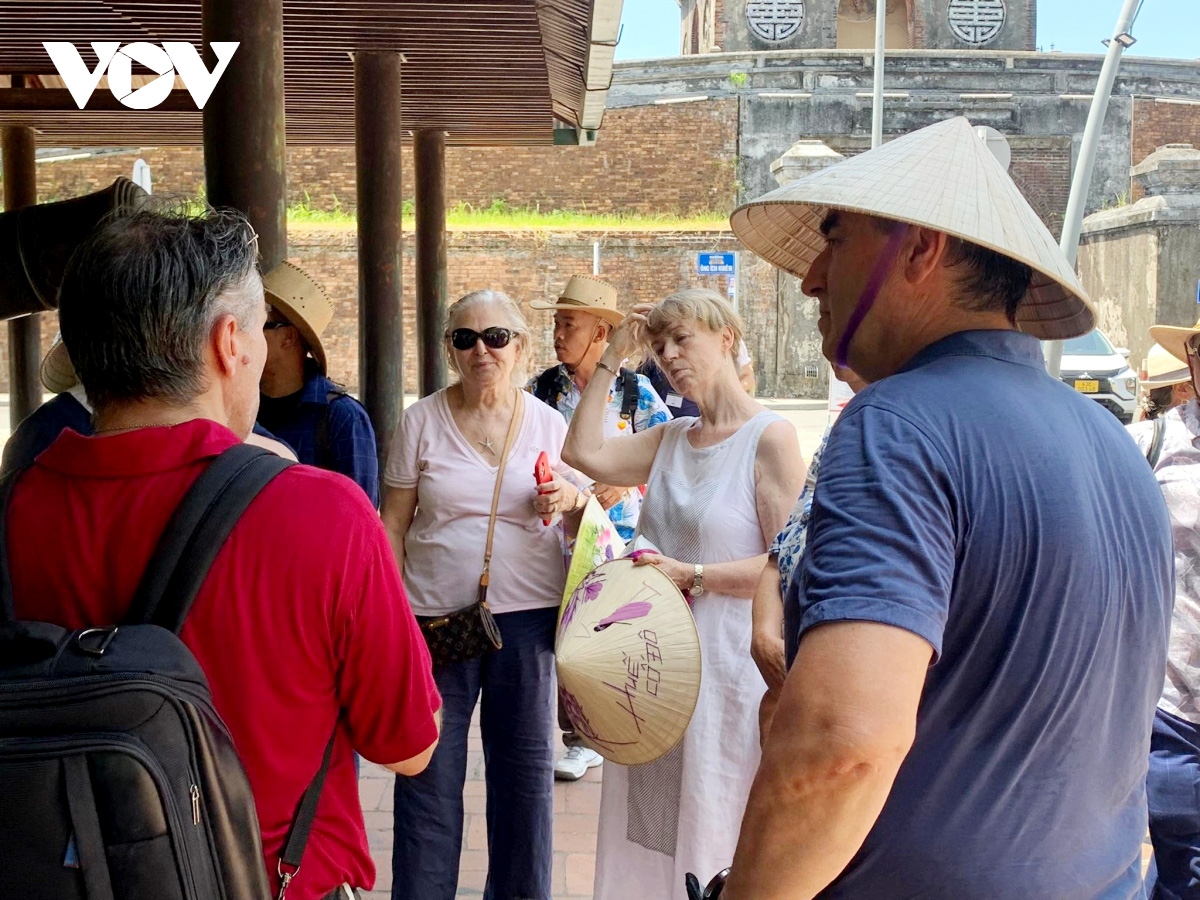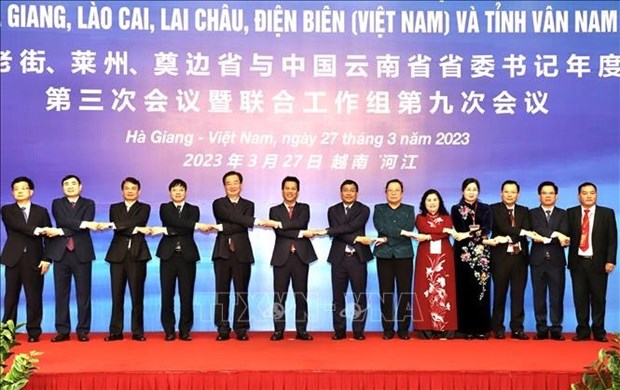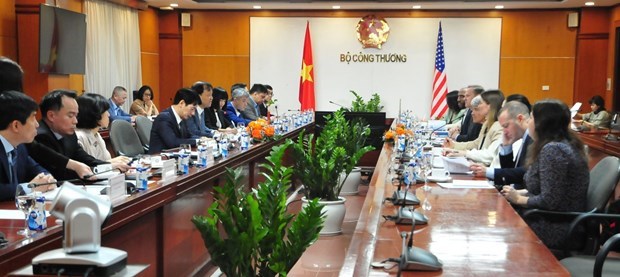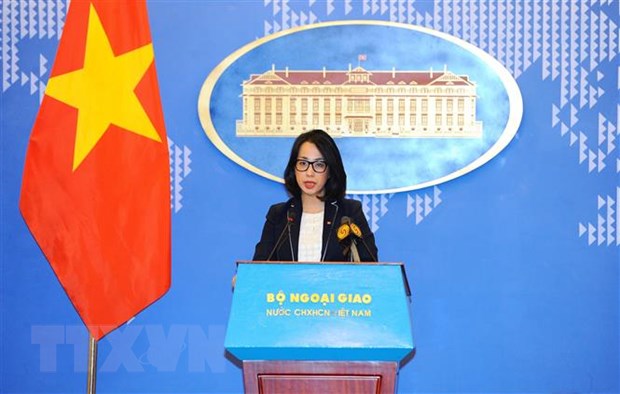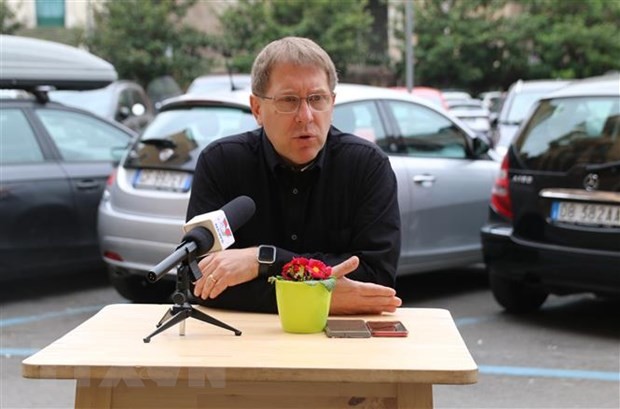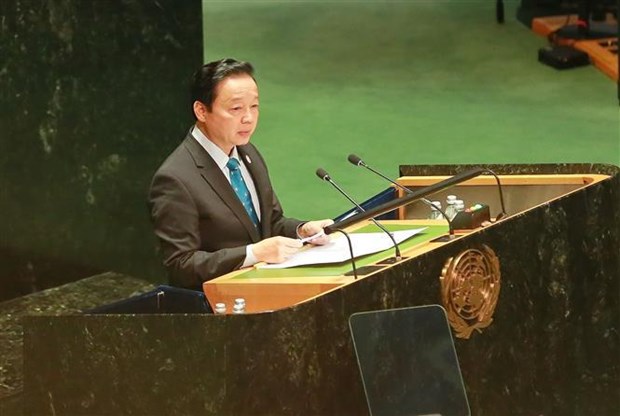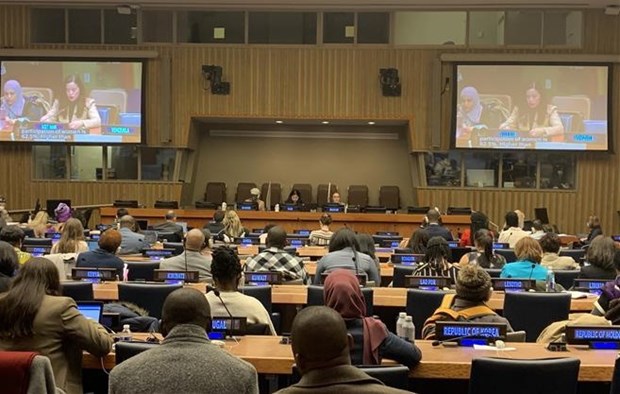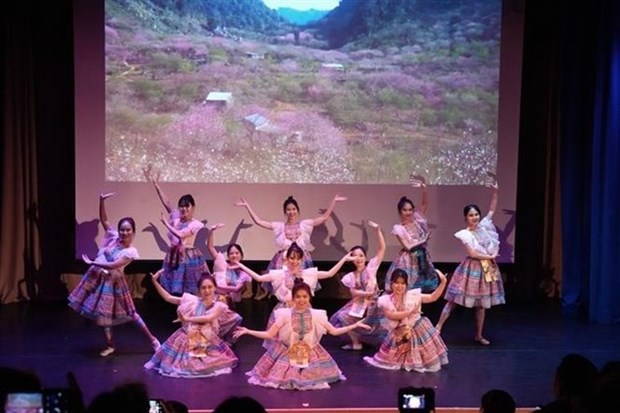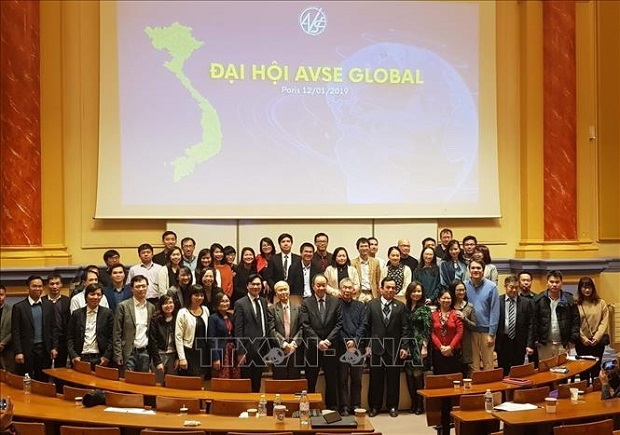 |
| The gathering gives them the chance to explore the traditional craft of silk weaving as well as authentic products in Vietnam. Photo: TG&VN |
More than 100 female diplomats, representatives of international organizations in Hanoi, and spouses of foreign ambassadors in Vietnam gathered at an event in Hanoi to honour the role of women in development, VNA reported.
The event, entitled Following the Traces of Silk, has been organised by the Ministry of Foreign Affairs (MoFA) in collaboration with the Vietnam Sericulture Research Centre (VIETSERI) and the Vietnamese silk brand De Silk to celebrate International Women’s Day (March 8).
The event also aims to introduce to special guests the process of making Vietnamese silk.
 |
| UN Women Country Representative, Elisa Fernandez Saenz. Photo: TG&VN |
Adorned in a Vietnamese ao dai (traditional Vietnamese dress), UN Women Country Representative, Elisa Fernandez Saenz emphasised the importance of culture in every society.
“Culture can transform societies into more inclusive, resilient and sustainable," she said. "Culture can also be a powerful tool to communicate complex truths about our existence better. It can open minds and hearts to understand diversity better and act against social injustices, inequalities, and climate change.”
The UN officer also said the Vietnamese government demonstrated a high commitment to placing culture at the heart of its ambitious development trajectory.
“Currently, there are eight [UNESCO] world heritage sites and 15 intangible cultural heritages in Vietnam," Saenz added. "This capture Vietnam's uniqueness and the country's laudable commitment to protect culture and heritage for future generations to enjoy.”
Since arriving in Vietnam five years ago, the UN officer has learned about the great beauty of this clothing and its prominence to those wearing it.
“Traditionally, the ao dai is made from silk, and as you know, silk has played an important role in the cultural and economic life of Vietnam," Saenz said. "It has also been linked to women's movements. For example, as the gender equality movement began to gain momentum in Vietnam in the early 20th century, silk production became a symbol of women's empowerment.
"Women involved in silk production organised themselves into cooperatives and used the income from their work to support social and political causes, such as education for girls.”
She said she hopes that Vietnam's silk production will continue to pave the way for greater gender equality and prosperity for all.
 |
| Deputy Minister of Foreign Affairs Le Thi Thu Hang speaks at the event. Photo: TG&VN |
Delivering a speech at the event, MoFA deputy minister of Le Thi Thu Hang said that since the special day [International Women’s Day] was founded 113 years ago, the international community had made great strides in protecting and upholding the role and contribution of women.
“The women ourselves also have changed in awareness and action to be more active in participating and contributing to society,” Hang said.
According to MoFA vice minister, in 2022 Vietnam was among the ten best countries in the world in implementing the United Nations' goals on gender equality and empowering women and girls.
 |
| Honorary President of the AWCH and Spouse of Foreign Minister Vu Thi Bich Ngoc (right) and Nguyen Phuong Nga, President of the Viet Nam Union of Friendship Organizations (VUFO) at the program. Photo: TG&VN |
At the event, the participants also had a chance to learn about the origin and development of Vietnamese silk weaving craft through a demonstration from the founder of the silk brand De Silk, Van Hang.
The guests also enjoyed visiting the VIETSERI mulberry field, where they picked with relish the ripe mulberries or fed the silkworm with mulberry leaves.
Some even sit by a loom to experience the weaving craft or to learn how the silk has been reeling.
Silk weaving has been a traditional handicraft in Vietnam for thousands of years. Legend has it that the craft was introduced to Co Do village in Hanoi’s outlying district of Ba Vi by the sixth Hung King’s daughter, Princess Thieu Hoa, according to Vietnamnet.
Through the centuries, the craft has been conserved and incorporated into the daily life of many Vietnamese.
Silk is a fabric which is very soft, light, durable, and 100% natural. To make silk, it’s necessary to grow mulberry trees to nurture silkworms which release silk filaments.
Currently, more than 100,000 Vietnamese farmers live off mulberry farming and silkworm raising. Many Made-in-Vietnam silk products have been exported to countries worldwide, including Japan, Russia, India, and Switzerland.
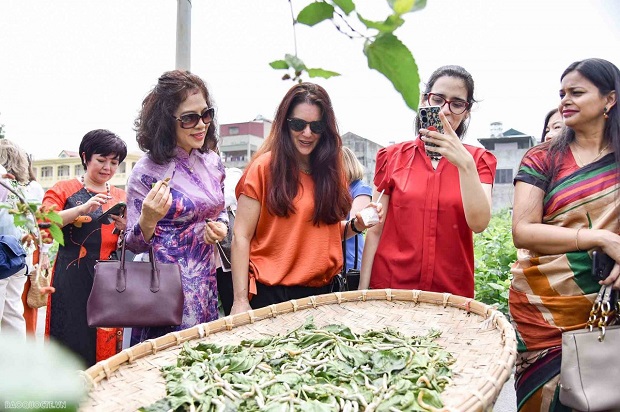
Foreign delegates inquired into the history of the craft as well as the production process through a presentation by a representative of brand De Silk. Photo: TG&VN
Long Pham / Vietnamtimes



